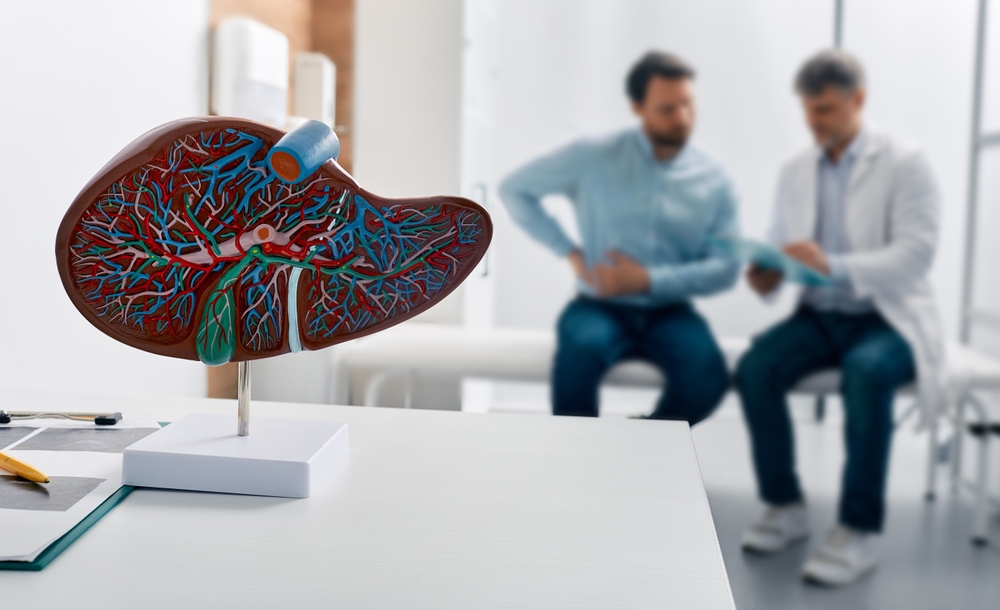Low back pain (LBP) is a significant health problem, affecting approximately 60–80% of the adult population at some stage in their life. LBP leads to substantial personal suffering and economic losses due to physician visits, work disability, and healthcare costs. In some areas of the world, such as Australia, 11% of the population suffers from high-disability LBP, making it one of the most frequently seen musculoskeletal conditions in general practice.

One common source of LBP is the intervertebral disc (IVD). It is responsible for up to 40% of cases of chronic LBP with a poor prognosis. Discogenic pain typically presents as central low back pain but may radiate outwards to surrounding tissues or even the lower limb. This pain arises from aberrant healing responses within the disc structure that cause it to become densely innervated.
In the past, treatment options were typically centered on pharmacological or surgical interventions with limited evidence for success or lasting efficacy. However, research has revealed alternative therapeutic approaches that may be more effective in managing discogenic LBP.
The results of previous preclinical and clinical trials of MSCs are encouraging and support their potential application in the treatment of disc-related lower back pain for a variety of therapeutic benefits. In this context, adipose-derived mesenchymal stem cells can be used to reduce pain, improve mobility, and assist in regenerating intervertebral discs. Furthermore, the use of ADMSCs has not only positive implications for improved patient outcomes but also economic benefits.
Moreover, beyond providing a cost-effective means for ameliorating LBP symptoms, there is evidence suggesting that ADMSCs may be able to both reverse existing tissue damage and prevent further deterioration by virtue of their anti-inflammatory properties. Overall, given the current evidence highlighting the potential efficacy and cost-effectiveness of bone marrow-derived MSCs as treatments for disc-related lower back pain, it seems clear that further research should be conducted into this exciting therapeutic modality with an eye toward translating promising preclinical findings into effective patient care interventions.
A study, Low-dose mesenchymal stem cell therapy for discogenic pain: safety and efficacy results from a 1-year feasibility study, looked into how stem cell therapy can improve lower back pain in patients.
Results of the Study
The study aimed to assess the safety and efficacy of low-dose adipose-derived mesenchymal stem cells in participants with single-level disc degeneration and symptomatic discogenic lower back pain. The research also sought to determine the potential of ADMSC therapy to improve quality of life outcomes, reduce the progression of DDD, or even regenerate the intervertebral discs.
Nine patients who were suffering from chronic LBP from lumbar disc disease were chosen for the study. The researchers harvested fat from the patients using abdominal lipo harvest procedures. The ADMSCs were then extracted, isolated, and expanded. Patients received a 1 ml intradiscal injection of 10 million adipose-derived stem cells. Six months after the first injection, patients were given the option to have another injection of 10 million ADMSCs.
Magnetic resonance imaging (MRI) was used to assess potential changes in the IVD following treatment. Primary safety and efficacy outcome measures were collected at 1, 3, 6, 9, and 12 months post-treatment. The researchers used numeric pain rating scale (NPRS), patient global impression of change (PGIC), DASS21, ODI, and EQ-5D-3L to determine the success of the treatment.
The clinical results of the treatment were promising for patients suffering from lower back pain related to disc degeneration. First, there were no serious or unexpected adverse events from the treatment. Three patients were able to reduce the amount of pain medication they took, and another stopped all medication completely after 12 months.
All patients reported pain improvements six months after receiving the treatment. Seven of the nine patients continued to have pain improvements 12 months after treatment. Eight patients reported improvements in their most severe NPRS scores at six months. 89% of patients showed improvements from their baseline as measured by the EQ-5D-3L and ODI.
Patients reported improvements using the PGIC; three patients felt minimal improvement, three patients reported much improvement, and one patient reported a significant improvement. Another patient reported no improvement, and the last patient recorded a slight worsening, likely due to a work-related injury. The researchers found that there was no further disc degeneration, and there were improvements to disc protrusions and annular fissures.
This study provides compelling evidence that autologous adipose-derived mesenchymal stem cells are effective in treating lumbar disc degeneration and its associated pain. Moreover, the study reported no safety issues related to the use of ADMSCs for this purpose. The benefits of using ADMSCs to treat lumbar disc degeneration are numerous. Unlike surgical options, which require extensive recovery periods and can cause complications such as infection and nerve damage, this treatment is much less invasive with minimal risks involved. Furthermore, it has been shown to provide long-term relief from debilitating symptoms such as chronic low back pain, helping patients to return to their daily activities quickly and safely.
Overall, this study provides strong evidence for the potential therapeutic use of autologous ADMSCs in treating discogenic low back pain. With further research into this promising treatment option, physicians may soon be able to offer more options for people suffering from disc degeneration and its associated symptoms.


